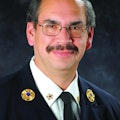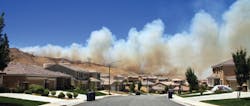In the category of fire service politics, some extreme words were spoken on the floor of Congress recently while members were discussing the bill to aid rescuers who worked at the World Trade Center site. With more and more firefighters, police officers, EMS and USAR personnel, and construction workers getting ill, the time has come, nine years later, to provide what these first responders need and deserve. Stop the petty politics and do what is right. In November, we can change the slate if those in office don't care or don't listen. You're either for us or against us. It might be easy to forget about the World Trade Center if you don't live near it, but these first responders live with it every day.
Speaking of politics, we recently spoke to our longtime Fire Politics columnist, Hal Bruno, who's been experiencing health problems for the past few years. Hal sounds great and we wish him well on behalf of everyone in the fire service.
We recently returned from the firehouse expo in Baltimore, MD. From the positive comments I heard, the attendees learned a lot from the conference sessions, panel discussions, and discussions with instructors. Despite the normal Baltimore summer weather, hands-on-training was well received. Various locations were used, including vacant buildings and city and county fire academies. FDNY Captain Robert Morris, whose forcible-entry class is always one of the first to sell out, added three new props to his day-long program. I am sure the students received a real education in the overall world of forcible entry. This year's conference program increased 40% to nearly 120 classes. (See page 112 for a recap of this year's Expo.)
A highlight of the conference was the keynote address in which Battalion Chief Larry Collins of the Los Angeles County, CA, Fire Department described the rescue work following the earthquake in Haiti that killed more than 300,000 people. From the pictures showing the utter devastation and conditions the responding USAR teams had to endure, it was quite a scene. A news clip showed Los Angeles County USAR team members working for hours to rescue a woman who was initially heard under a one-foot opening. Representatives from all the teams and departments that responded all did work above and beyond to rescue residents.
Also during the opening ceremonies, the National Fallen Firefighters Foundation (NFFF) presented a program about the problems that can be caused by emergency responders who do not wear seatbelts to calls. Accompanied by his wife, a fire chief who survived a crash in which he was not wearing his seatbelt made an impassioned plea to the audience about what happened to him and the months of recovery and therapy he needed after his accident. After the presentation, the foundation gave each attendee a copy of a DVD with the program on it so they could show it to their own fire department.
During one evening in Baltimore, we celebrated the retirement of Bob Barraclough, whose health now prevents him from teaching at conferences. Along with many of his peers, I thanked Bob for the mentoring he's provided about conference programs and for teaching me about the apparatus industry. He and his conference partner, Alan Saulsbury, have helped the students in their apparatus classes with purchases, specifications and safety considerations. I shudder to think where we would be with apparatus design or accidents if it were not for these two individuals.
Recent wildfires in California have destroyed many homes and threatened many others. Acres of brush have been consumed. A recent report cites a lawsuit against the use of fire retardant. More to come and it isn't even fire season yet.
For comments, ideas, and suggestions, please contact us at [email protected].
About the Author

Harvey Eisner
Editor Emeritus
HARVEY EISNER was named Editor Emeritus of Firehouse® after serving 15 years as Firehouse's Editor-in-Chief. He joined the Tenafly, NJ, Fire Department in 1975 and served as chief of department for 12 years. He was a firefighter in the Stillwater, OK, Fire Department for three years while attending Oklahoma State University. Eisner was an honorary assistant chief of the FDNY and program director for the Firehouse Expo, Firehouse World and Firehouse Central conferences. He covered many major fires and disasters and interviewed numerous fire service leaders for Firehouse®
